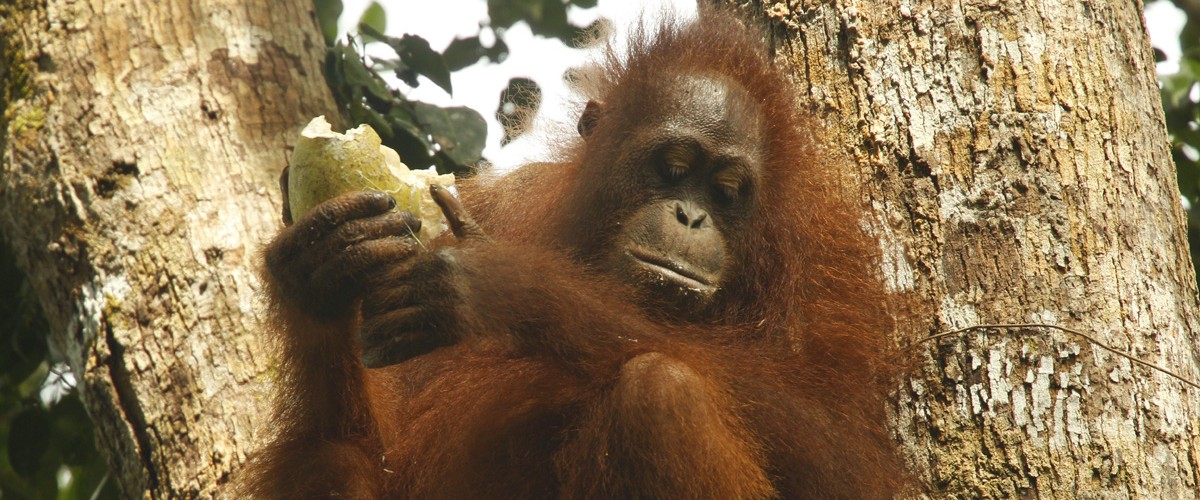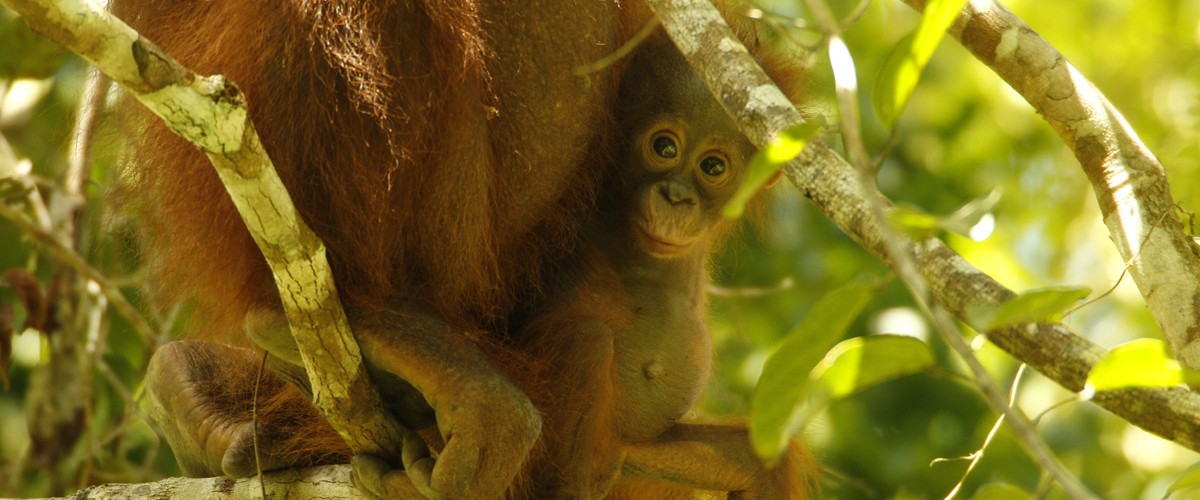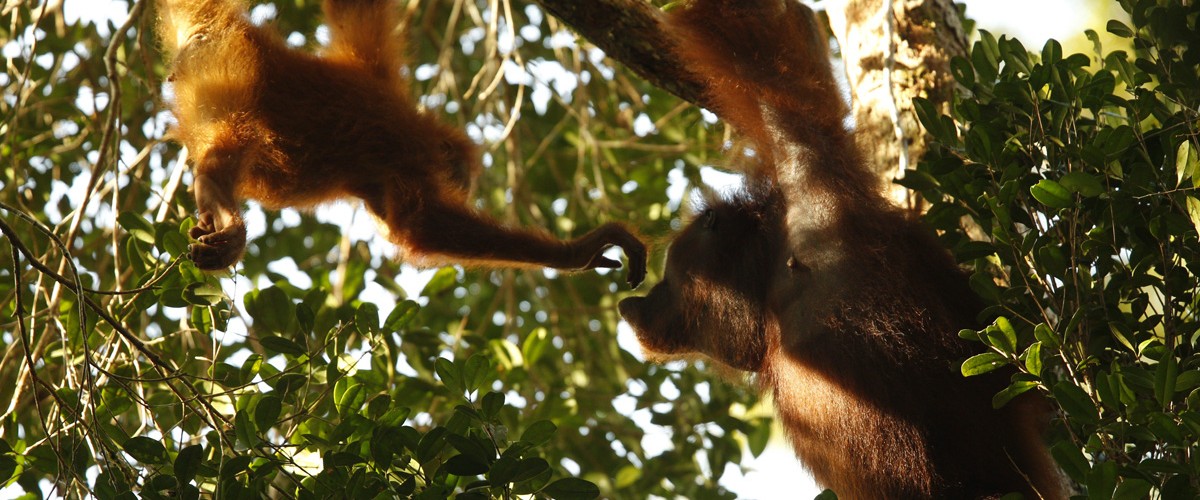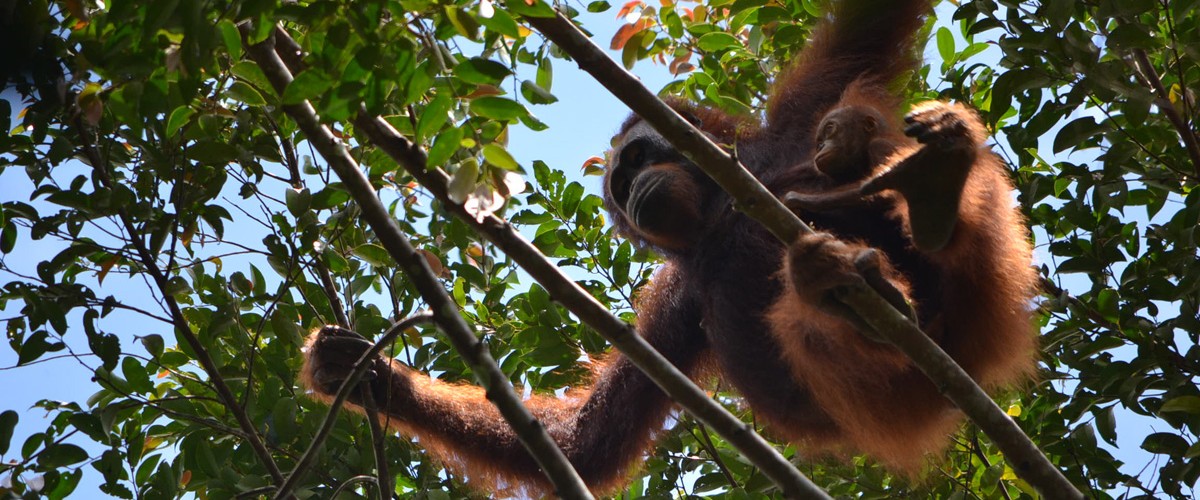On June 8th, the Gunung Palung Orangutan Project participated in the 2017 #RainforestLive. This gave us an opportunity to share some of our daily encounters at the Cabang Panti Research Station in Gunung Palung National Park in real time. We posted on Facebook, Instagram and Twitter and provided participants not only with an insight into the beauty of the forest but a further understanding of the dynamics of the rainforest and its inhabitants and how these might change over a short period of time.
Whilst a photo is said to be worth a thousand words, sometimes a little bit of extra explanation is required to truly understand and appreciate the beauty of these experiences we shared.
We were out following Walimah, one of our most studied adult females. She woke up early as she normally does but then, out of character, she made another nest and went back to sleep mid-morning. The assistants and I sat quietly at the base of her tree. This is often a good time to spot wildlife as we spend potentially hours waiting with minimal movement or noise. Before long there was movement in the leaf litter nearby. I peered in closer, trying to distinguish the shape and movement style of the animal amongst the leaves. Noticing my intense concentration, one of our field assistants, Dang, said “there’s a tortoise there, it’s been there awhile”. The green mossy shell blended in with the surrounding vegetation and leaf litter perfectly. After a few photos we returned to our original sitting positions. The tortoise later emerged from the shelter of its shell and continued clambering through the forest, passing right by my feet as I sat completely still, enjoying the encounter.
|
|
|
This shy tortoise made an appearance during #RainforestLive. Photo by Brodie Philp.
|
If we are not currently following an orangutan, then our field assistants go out searching for them. This involves walking our trail system in search of orangutans or any signs that might indicate their presence. On this particular afternoon, whilst searching, we came across a number of broken logs that had recently been torn apart. They were a shredded mess, so our thoughts were that this was either a sun bear or an orangutan. Given how fresh this was, we were hoping for further signs in the area which could lead us to the culprit. Further down the trail we stopped to listen for any noises coming from the surrounding forest. Before long we heard the crash of a tree off to the side of the trail. We knew there was something close by and it was big. We crept towards the sound slowly. As we got closer, a field assistant saw that it was Alfred, our resident dominant male. Alfred was searching for termites among logs in the swamp. When he was successful at finding a termite ridden log he would haul it up into a tree with him. When he started, the log was around 5 meters long. He lifted it up and then placed it resting horizontally on a side branch to support its weight as he methodically bit and pulled it apart, piece by piece. Termites scrambled for their lives as they sprinkled to the ground like light rain. Alfred’s orange beard was littered with termites as he stuck his lips into the log to suck them out from their burrows and chambers. Once all the termites had either been eaten or evacuated from the log, he simply let go and it crashed to the ground. The loud thud echoed throughout the forest.
|
|
|
Alfred snacking on termites. Photo by Brodie Philp.
|
While back at camp, I was sitting on the front deck after some heavy rain and I saw some movement high up in the trees. With a heavy shake of the leaves, and a few macaque squeals from above, I heard a splat on the floor. A bright green object landed on the ground below. The trees above continued to shake as the macaques were quite unsettled by what had just occurred. I tried to focus on the ground from a distance, as I was sure the noise of the landing was too heavy to be a leaf. I crept closer to find that my suspicions were right; it was a small viper that had startled the macaques. It sat curled on the ground completely still. This gave us all a chance to grab our cameras. The snake’s coloration would make it well camouflaged in leaves, so it left us wondering if he caught the macaques completely by surprise. The snake’s green skin was beautifully exaggerated against the dull dirt background. The snake sat still the whole time until we used a broom to move him off of our path and into the safety of some nearby bushes.
|
|
|
A small viper fell to the ground after a little tussle with a troop of macaques. Photo by Brodie Philp.
|
Each afternoon, as the day starts to wind down and the heat from the scorching sun starts to subside, the life around the river starts to liven up. Crashing sounds in the tree tops are frequent as a troop of macaques move in from the surrounding forest. Once settled by the river, some will use this time for extra foraging, but most engage in social activities. It is not an uncommon sight to see two or three macaques perched on the outer most branches of a tree, engaged in a grooming session. On this particular day, the whole troop sat perched on a creeper vine that draped over a tree. The highest point in the center of the creeper was worn down as this was the most illustrious spot to be. For over an hour smaller macaques would tussle with bigger opponents just to get a split second on the top spot. As challengers were thrown off, they would roll down the sides with their arms outstretched, attempting to grab on to anything they could as they fell. They would immediately climb back up and start all over again. Some were sneakier, going inside the creeper and pouncing from hidden angles, pushing, pulling and biting to remove the other from this forest thrown. Check out the macaques playing and other animal encounters in this short video we put together.
|
|
|
Macaques playing and other encounters during #RainforestLive 2017.
|
On my first hike out the forest, after more than a month at camp, the first thing I noticed when I got to the forest edge was the sky. Deep in the rainforest, a thick canopy normally fills the skyline as every tree fights for sunlight. In addition, most nights there are rain clouds or mist to contend with. It is a very rare event to get a clear open view of the sky. Down by the river that winds past camp there are small gaps in the overhanging trees that allow for a slither of sky to be seen. On a clear night I set up my camera on the sand bank next to the river’s edge and focused on a lone large tree that sits high above the others and always draws my attention during the day. A tip for long exposure rainforest photography is to check yourself for leeches before you start the photo sequence, otherwise there is a lot of uncomfortable fumbling around in the dark. I had the pleasure of learning this the hard way, so this picture will always remind me of life in the rainforest!
|
|
|
Stars at night from Cabang Panti Research Station. Photo credit Brodie Philp.
|













